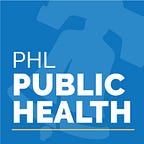Hypertension Among Adults in Philadelphia, 2011–2017
Hypertension, or high blood pressure, increases the risk of heart disease, congestive heart failure, kidney disease, and stroke. An estimated 68 million people in the United States — or one in three adults — have hypertension. People living in neighborhoods with physical and socioeconomic disadvantages are at higher risk for hypertension, stroke, and coronary heart disease. Of the six largest cities in the US, Philadelphia has the highest prevalence of hypertension (33%). Within Philadelphia, hypertension rates vary across neighborhoods. Hypertension is caused in part by behaviors, particularly diets high in sodium and low in fruits and vegetables, low levels of physical activity, smoking and excessive alcohol consumption. This issue of CHART looks at trends in self-reported hypertension among adults in Philadelphia from 2011–2017 from the Behavioral Risk Factor Surveillance System, an annual telephone survey, as well as hypertension-related hospitalizations and deaths by race and age.
Self-reported hypertension rates were stable overall, but might be increasing in non-Hispanic Blacks
- Roughly 1 in 3 adults reported being diagnosed with or currently taking medication for hypertension.
- Non-Hispanic Black adults reported significantly higher rates compared to non-Hispanic white adults (48% vs. 29%).
- Overall, hypertension rates remained stable during these years, however there was a slight increase from 2011 to 2017 in non-Hispanic Black adults.
Self-reported hypertension rates were highest among non-Hispanic Black women and men
- Rates of self-reported hypertension were substantially higher among non-Hispanic Black women compared to non-Hispanic white women (49% vs. 29%).
- Non-Hispanic Black men had higher rates of hypertension than non-Hispanic white men (42% vs. 36%).
- However, adult hypertension was higher in non-Hispanic white men than non-Hispanic white women (36% vs. 29%).
Rates of hypertension-related hospitalizations increase with age, especially among non-Hispanic Blacks
- Overall, as age increases, the rate of hypertension-related hospitalizations also increased.
- Rates of hypertension-related hospitalizations for non-Hispanic Black adults were more than twice that of non-Hispanic white adults.
- The rate of hypertension-related hospitalizations began to increase at earlier ages for non-Hispanic Black adults than for non-Hispanic white adults.
Hypertension-related deaths were highest in non-Hispanic Blacks
- In younger adults, hypertension-related death rates were three times higher in non-Hispanic Blacks than non-Hispanic whites.
- In older adults, hypertension-related death rates were twice as high in non-Hispanic Blacks as in non-Hispanic whites.
What can be done
The Department of Public Health is:
- Coordinating learning collaboratives with clinical partners across the city to increase recognition and control of hypertension.
- Implementing Philadelphia’s new sodium warning label law, which requires warning labels on items on chain restaurant menus with more than 2300 mg of sodium.
- Working to increase the availability and affordability of fresh fruits and vegetables across the city.
- Promoting free and low-cost opportunities for physical activity through www.PhillyPowered.org.
- Working with partners across the city to improve nutrition and physical activity for all Philadelphia residents through a policy, systems, and environmental approach.
Healthcare providers can:
- Develop and follow standardized protocols for hypertension control as recommended by the American College of Cardiology, the American Heart Association and the Centers for Disease Control.
- Use electronic medical records to identify patients whose hypertension is not yet well controlled or who need to return for follow-up.
- Increase patient and provider awareness of the importance of blood pressure control.
- Identify and address barriers to medication adherence.
- Conduct quality improvement activities to improve hypertension control, using a team-based approach.
People can:
- Follow recommendations to help prevent high blood pressure:
- Aim for at least five servings of fruits and vegetables each day.
- Limit your sodium intake to less than 2300 mg daily (read labels to see sodium levels).
- Avoid smoking — even one or two tobacco products daily can double your risk of heart disease.
- Avoid unwanted weight gain by limiting screen time, getting at least seven hours of sleep per night, and limiting high fat/high sugar foods.
- Exercise regularly: Go to PhillyPowered.org for free and low-cost ideas on how to get started.
- Limit your alcohol intake to no more than two drinks per day for men and one for women.
- Learn more about how to prevent high blood pressure.
- See your doctor regularly to have your blood pressure checked. If you don’t have a regular doctor, City health centers offer preventive care as well as care for chronic conditions whether or not you have health insurance.
Suggested citation: Philadelphia Department of Public Health. Hypertension Among Adults in Philadelphia, 2011-2017. CHART 2019;4(4):1–4.
CHART is a publication of the Philadelphia Department of Public Health, and is intended to highlight under-reported or under-appreciated public health issues in an effort to kick-start a conversation. Readers can subscribe to CHART on Medium, or on our website.
